Welcome to our article on the most dangerous animals lurking in New York’s lakes and rivers. While many people might assume that the biggest threat comes from predators like cougars or wolves, it is actually the waterways of this state that are home to some of the most hazardous creatures around. From venomous snakes to aggressive fish, there are a wide variety of species that pose a risk to those who venture into these aquatic environments. In this article, we will explore some of the top contenders for the title of “most dangerous,” providing you with information on their behaviors, habitats, and potential risks so you can stay safe while enjoying all that New York has to offer.

Dangerous Animals in New York’s Lakes and Rivers
While New York certainly does not have as many dangerous animals near its lakes and rivers as Florida or South America, there are a few animals that you should be aware of before you go on your next outdoor adventure.
1. Snapping Turtle

A snapping turtle sitting on the sand certainly looks harmless. But is he?
©Patrick Rolands/Shutterstock.com
A snapping turtle is a freshwater reptile that can be found in lakes and rivers throughout New York. These creatures are dangerous due to their aggressive nature and powerful jaws, which can cause serious injury to humans if they feel threatened or provoked.
Despite their slow-moving appearance, snapping turtles are actually quite fast and agile in the water, making them difficult to avoid if encountered while swimming or boating. Additionally, these turtles have been known to attack small animals such as birds and fish, further demonstrating their predatory tendencies. It is important for individuals who frequent bodies of water where snapping turtles reside to exercise caution and respect towards these creatures in order to avoid any potential harm or danger.
2. Beaver
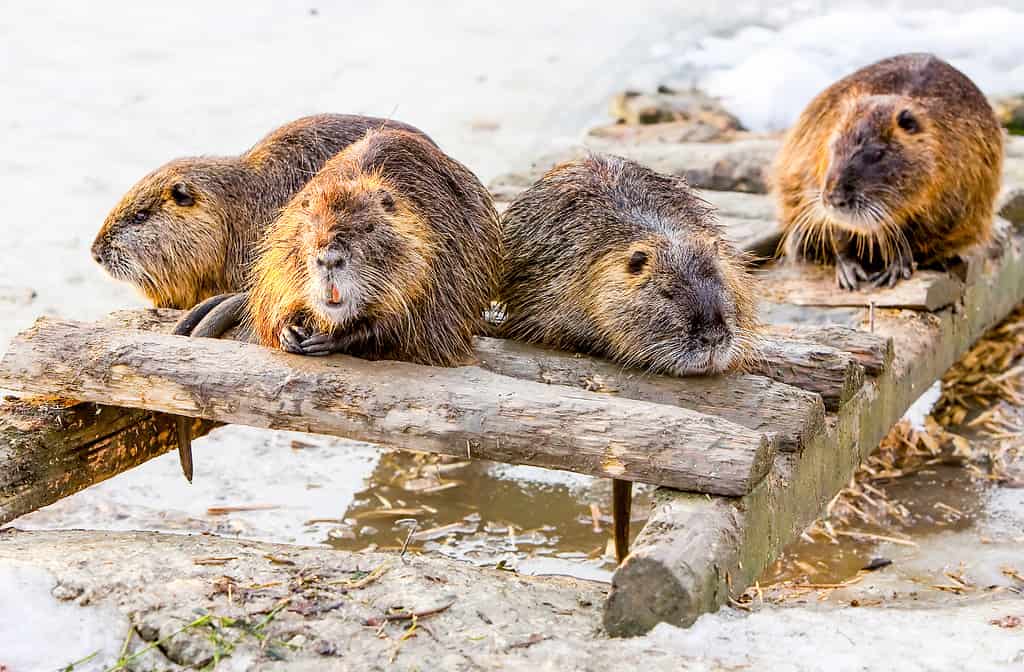
Beavers really don’t like it when people approach their dams.
©Ammit Jack/Shutterstock.com
Beavers are generally peaceful creatures that prefer to avoid confrontation. However, if they feel scared or threatened, their instinctual response might be to defend themselves and their territory. When a beaver feels trapped or cornered, it may lash out with its powerful teeth and sharp claws in an attempt to protect itself. This is why it’s important for people to be cautious around these animals and give them plenty of space.
Additionally, while rare, there have been instances where beavers have attacked humans who got too close to their dams or lodges. These attacks usually occur when the beaver perceives a threat to its offspring or food supply. In order to prevent such incidents from occurring, it’s best for individuals not familiar with handling wildlife to contact local authorities before attempting any kind of interaction with these animals.
In conclusion, although typically docile creatures, they are wild animals. We must always show respect towards them by keeping our distance and avoiding approaching them without proper precautions being taken first.
3. Mosquito

Mosquitos are responsible for spreading many diseases.
©Anest/Shutterstock.com
Mosquitoes are known to be carriers of various infectious diseases such as malaria, dengue fever, Zika virus, and West Nile virus. These tiny but dangerous insects thrive in humid environments in New York near water bodies like swamps and marshes, where they lay eggs and breed rapidly.
Mosquito bites not only cause irritation but can also lead to serious health problems for humans and animals. The female mosquito feeds on blood, which is necessary for the production of her eggs. In the process, she injects saliva into the skin, which can contain harmful pathogens that cause disease. It is important to take precautions when spending time near bodies of water or in areas with high mosquito populations by wearing protective clothing, using insect repellent with DEET or other recommended ingredients, and avoiding outdoor activities during peak mosquito hours at dawn and dusk.
4. Tick
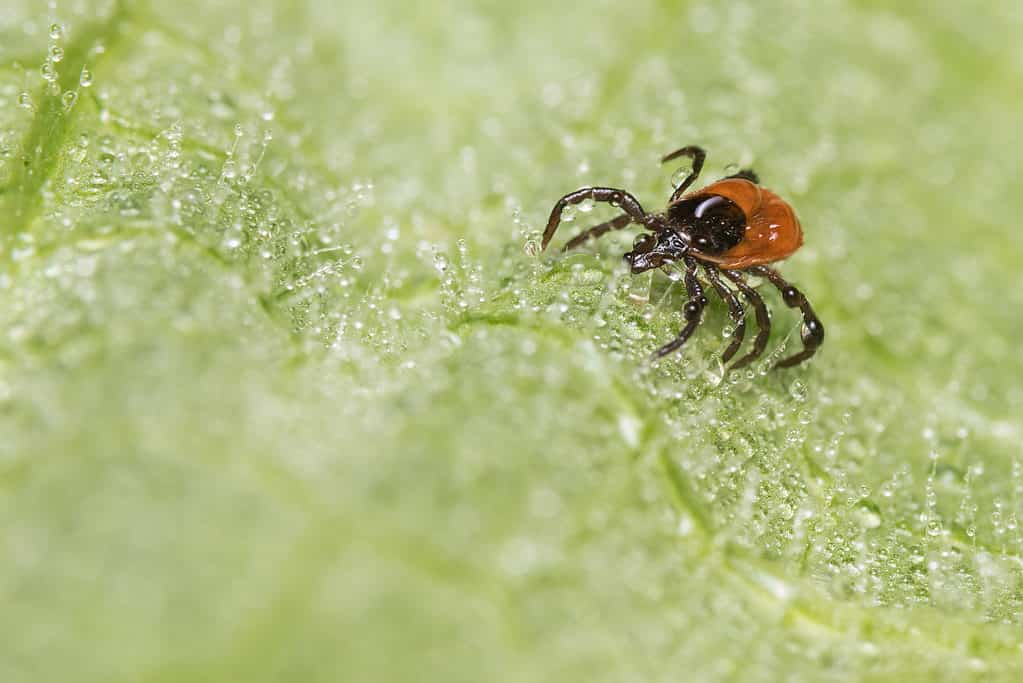
Ticks live near moist shady environments.
©iStock.com/Ladislav Kubeš
Ticks live in moist and shady environments and are commonly seen in forests, woods, and near rivers and lakes in New York. Believe it or not, they are one of the most dangerous animals in New York.
Ticks are notorious for transmitting a wide range of diseases to both humans and animals. The most common disease that ticks carry is Lyme disease, which can cause severe symptoms such as joint pain, fatigue, fever, and even neurological problems if left untreated. In addition to Lyme disease, ticks in New York are also known to carry other dangerous illnesses such as babesiosis, anaplasmosis, ehrlichiosis, and Powassan virus.
The danger of tick-borne diseases is not limited to just humans. Ticks pose a significant threat to pets and livestock as well. For instance, dogs can contract canine Lyme disease from infected ticks, which causes similar symptoms like lameness or lethargy.
Moreover, the risk of contracting a tick-borne illness increases during the summer months when people spend more time outdoors engaging in recreational activities such as hiking or camping near wooded areas with tall grasses where ticks thrive.
Therefore it’s important for people venturing into these areas to take preventative measures against tick bites by wearing long-sleeved clothing covering their legs while using insect repellents containing DEET on exposed skin surfaces. It’s also recommended that individuals perform regular checks on their bodies for any signs of ticks after returning home from outdoor activities in places where they may be present.
5. Black Bear
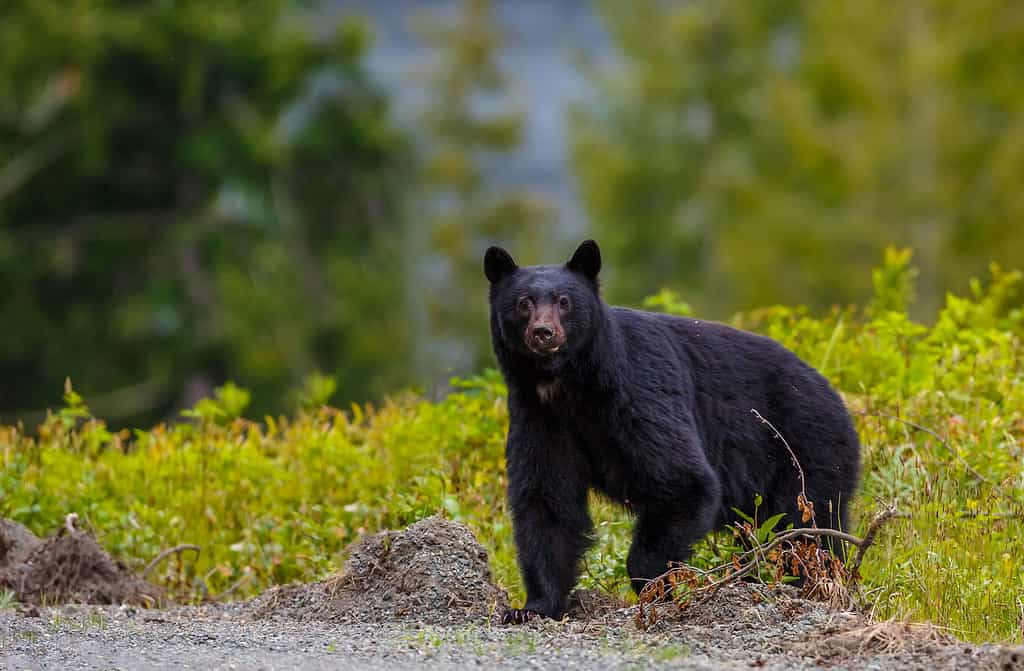
Black bears are usually shy and solitary animals.
©Menno Schaefer/Shutterstock.com
Black bears are known to inhabit areas near rivers and lakes in New York. These animals are generally shy and tend to avoid humans, but encounters can still be dangerous if they feel threatened or provoked. It’s important for people who live or recreate in these areas to take precautions like storing food properly, keeping a safe distance from any black bears they may encounter, and avoiding actions that could trigger an attack.
While black bear attacks on humans are relatively rare, they do occur from time to time. These animals have powerful jaws and sharp claws that can cause serious injury or even death if they feel the need to defend themselves. Additionally, pets like dogs may also be at risk of being attacked by a black bear if left unattended outside near their habitat.
Overall, it is important for anyone living near rivers or lakes in New York, where black bears may reside, to understand the risks associated with these animals and take appropriate measures to minimize those risks. By following safety guidelines provided by wildlife experts, both humans and wildlife can coexist peacefully while enjoying all that nature has to offer.
6. Timber Rattlesnake
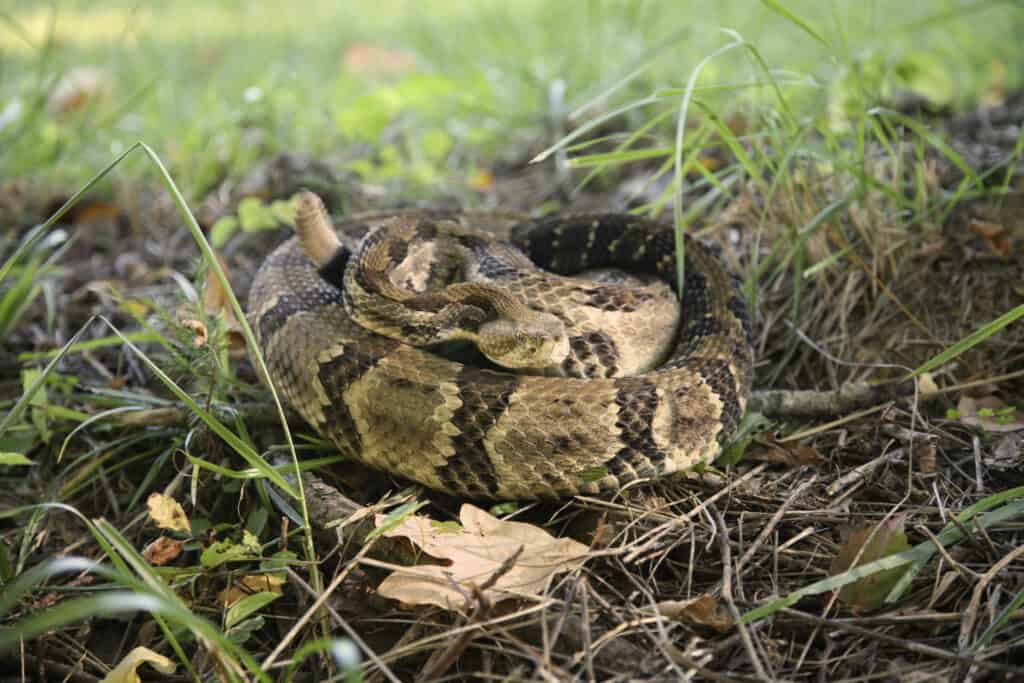
Timber rattlesnakes are extremely venomous but are not typically aggressive.
©iStock.com/NajaShots
Timber rattlesnakes can be found near bodies of water in New York, particularly in the northern and western regions of the state. They are venomous snakes that pose a threat to humans and their pets if they feel threatened or cornered. These snakes are a dangerous animal that lives in New York and prefers to be left alone.
The timber rattlesnake’s venom contains toxins that can cause severe pain, swelling, and even paralysis in humans. In some cases, it can also lead to organ failure or death. For pets like dogs and cats who may come across these snakes while roaming around lakes or rivers, a bite from a timber rattlesnake can have similarly devastating consequences.
It is important for anyone spending time near bodies of water in New York where timber rattlesnakes are known to live to take precautions such as wearing closed-toe shoes, staying on designated trails rather than wandering off into brushy areas where snakes may be hiding, and keeping pets on leashes at all times.
While encounters with timber rattlesnakes are relatively rare due to their reclusive nature, it is still crucial for individuals living or recreating near their habitats to remain vigilant and aware of potential dangers posed by these fascinating yet dangerous creatures.
7. Bacteria
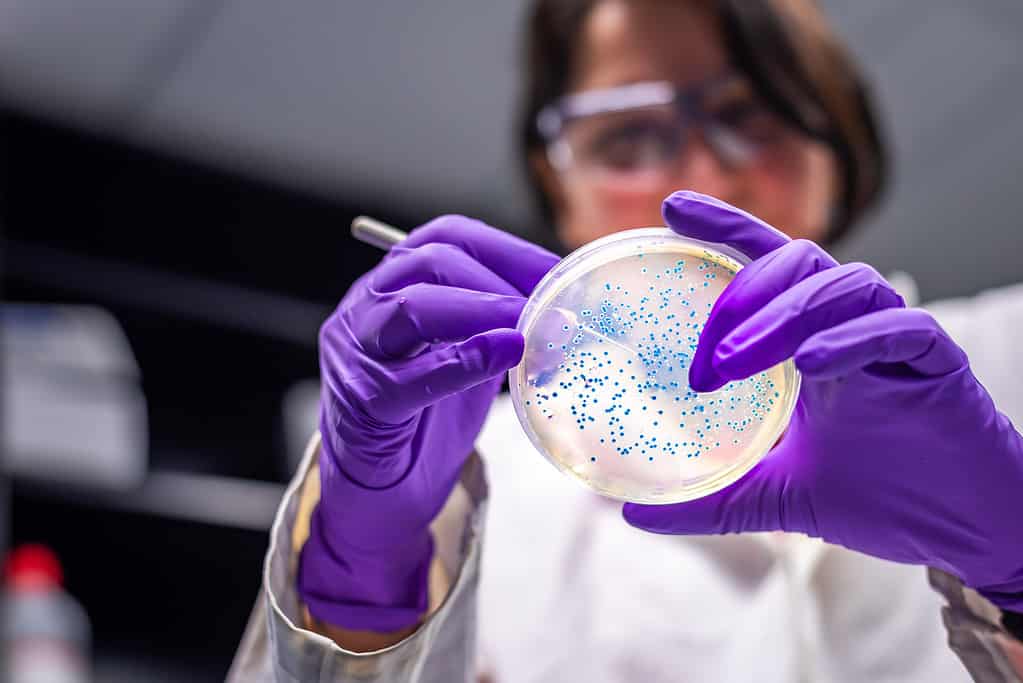
Bacteria and parasites can be deadly to humans.
©iStock.com/Manjurul
Antibiotic-resistant bacteria, commonly referred to as “superbugs,” are a growing concern in the medical community worldwide. These types of bacteria have developed resistance to antibiotics that were previously effective in treating infections. The discovery of antibiotic-resistant bacteria in rivers and lakes in New York is particularly alarming because these bodies of water serve as sources for drinking water and recreational activities such as swimming, boating, and fishing.
If humans or their pets come into contact with antibiotic-resistant bacteria through ingestion or open wounds, they may develop infections that cannot be treated effectively with traditional antibiotics. This can lead to prolonged illness, hospitalization, and even death. Additionally, if these superbugs continue to spread throughout the environment unchecked, it could render many current treatments for bacterial infections ineffective.
It’s important for individuals to take precautions when using natural bodies of water by avoiding swallowing the water and properly cleaning any cuts or scrapes before entering the water. It’s also crucial for policymakers and public health officials to prioritize monitoring efforts and implement strategies aimed at preventing the further spread of antibiotic-resistant bacteria in our watersheds.
Summary of the 7 Most Dangerous Animals Lurking in New York’s Lakes and Rivers
Here’s a recap of the seven most deadly animals that can be found in New York’s waters.
| Number | Animal | Dangerous Element |
|---|---|---|
| 1 | Snapping Turtle | Aggressive nature; known to attack birds and fish; powerful jaws can cause serious injury to humans if threatened |
| 2 | Beaver | If trapped, may lash out with powerful teeth and sharp claws; have attacked humans too close to their dams or lodges |
| 3 | Mosquito | Known to be carriers of various infectious diseases such as malaria, dengue fever, Zika virus, and West Nile virus |
| 4 | Tick | Transmit a wide range of diseases to humans and animals, including Lyme disease, babesiosis, anaplasmosis, and ehrlichiosis |
| 5 | Black Bear | Have powerful jaws and sharp claws that can cause serious injury or death if they need to defend themselves |
| 6 | Timber Rattlesnake | Venom contains toxins that can cause severe pain, swelling, paralysis, organ failure, or death in humans |
| 7 | Bacteria | Humans and pets may develop infections that can’t be treated effectively with traditional antibiotics and lead to illness, hospitalization, and death |
The photo featured at the top of this post is © LA Dawson, CC BY-SA 2.5, via Wikimedia Commons – License / Original
Thank you for reading! Have some feedback for us? Contact the AZ Animals editorial team.






